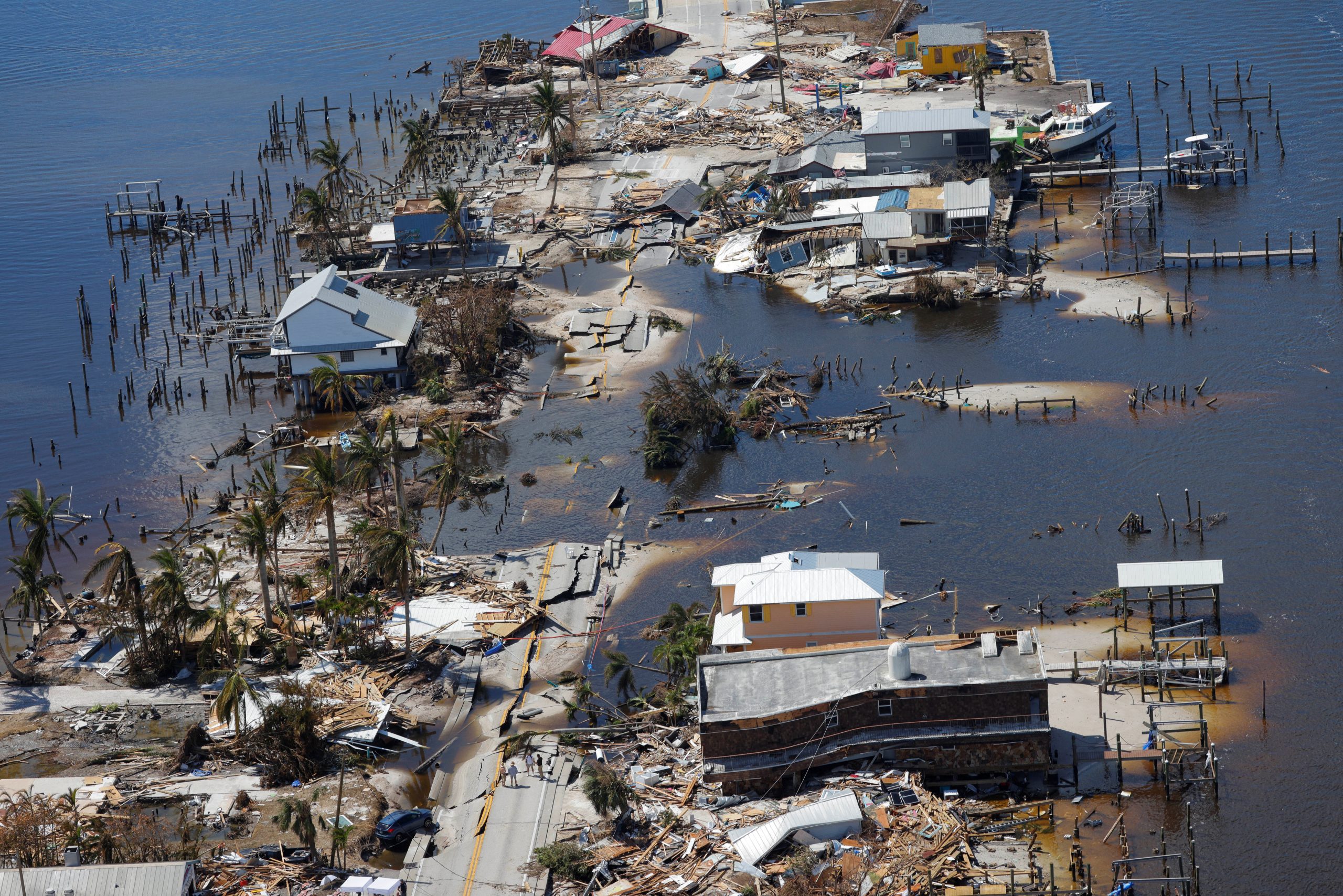
Lauren C. Moye, FISM News
[elfsight_social_share_buttons id=”1″]
Storm-related deaths caused by Hurricane Ian have now reached more than 80 with more expected to be discovered as floodwaters continue to recede.
Relief efforts have begun in Florida, which Ian hit as a strong category 4 hurricane, and South Carolina, which took a rebound hit after Ian built back up to a category 1 hurricane in the Atlantic Ocean after carving a path of destruction through central and southern Florida.
After the intense devastation, it’s now estimated by risk modeling firm Verisk that insurers may pay up to $57 billion in storm damages. Approximately 590,000 homes and businesses are still left without power in Florida this morning.
Samaritan’s Purse shared images of the devastation captured by their early relief teams on the ground yesterday:
The damage across southwestern #Florida is widespread. Homes were destroyed and debris was thrown everywhere by the winds. Our U.S. Disaster Relief team is on the ground. Our first volunteers headed out in to the community this weekend to begin serving. https://t.co/3AhCks7ii9 pic.twitter.com/OEWs4k8vTG
— Samaritan's Purse (@SamaritansPurse) October 2, 2022
Samaritan’s Purse was one of the earliest volunteer disaster relief groups to put boots on the ground in response to Ian with two tractor trailers of equipment and supplies arriving in the state on Sept. 30, two days after Ian first made landfall.
They aren’t the only volunteer organization in the area. Send Relief, associated with the Southern Baptist Convention, reported that disaster relief teams from seventeen states were preparing up to 160,000 meals to help families devastated by the storm.
Florida Governor Ron DeSantis worked directly with one of those teams yesterday.
Worked with Florida Baptist Relief to distribute food and water to residents of Naples.
@CaseyDeSantis and I have been encouraged by the outpouring of prayers and assistance for Floridians in need. Keep up the good work! pic.twitter.com/hpikyg6QPw— Ron DeSantis (@GovRonDeSantis) October 2, 2022
Both organizations along with the Global Methodist Church have called for financial donations to provide immediate assistance.
“Many of our sisters and brothers in Florida and elsewhere have a long road ahead of them as they assess the damage hurricane Ian has left in its wake,” the Global Methodist Church stated.
However, there is no financial estimation for the care needed for those who have experienced the loss of friends or family members. As flood waters recede in Florida and the Carolinas, there have now been 85 storm-related fatalities discovered with more likely to be reported in the next several days.
Four of these deaths occurred in North Carolina. The rest come out of Florida, almost entirely among five different counties located near the peninsula’s central and southern Gulf Coast.
The cities of Fort Myers and Cape Coral were home to over half of these fatalities, with Sherriff Carmine Marceno of Lee County reporting 42 fatalities in the coastal county. The four neighboring counties account for an additional 39 of the deaths.
The fatalities have caused some to question officials’ response to the storm from these counties. One Lee County official, Cecil Pendergrass who serves as chairman on the board of commissioners, said yesterday that evacuation orders were issued when the hurricane was first forecasted to track across the county. However, some chose to ignore those orders.
Gov. DeSantis quickly and easily answered one CNN reporter’s leading questions about the response from local county officials.
Today: CNN reporter questions Governor DeSantis, hoping to push a misleading narrative about evacuation in Lee County.
He shuts that right down.
🔥His answer is professional, direct & empathetic… with ZERO tolerance for gaslighting.https://t.co/Z8YVgcMXFl
— DeSantis War Room 🐊 (@DeSantisWarRoom) October 3, 2022
Ian struck Florida as a nearly Category 5 storm on Sept. 28 and was anticipated to become one of the costliest hurricanes in Florida history alongside Hurricane Irma in 2017 and Hurricane Andrew in 1992. Ian’s loss of life now exceeds that of Andrew, which killed 44 people according to Florida Today’s round-up of powerful hurricanes that have struck the Sunshine State.
According to the list, the deadliest hurricane in Florida history is the Okeechobee Hurricane, also known as the San Felipe Segundo Hurricane, which killed over 8,000 people when storm surges caused up to 20 feet of floodwater in parts of the state.
The White House announced that President Joe Biden and First Lady Jill Biden will visit Florida on Wednesday, following a visit to Puerto Rico scheduled for today.
